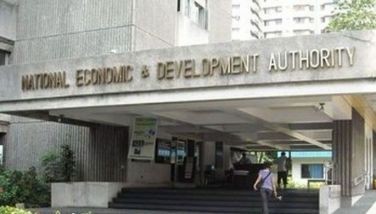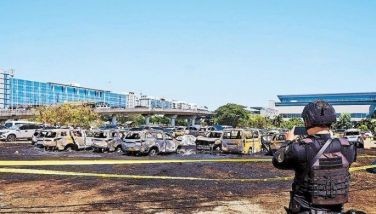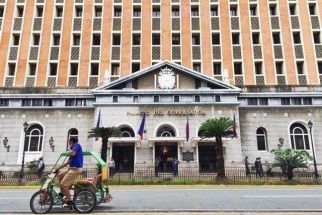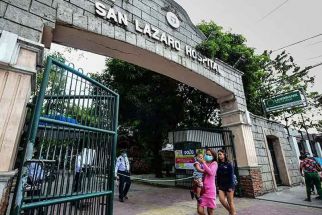YEARENDER: Yolanda puts public health system to a test
MANILA, Philippines - Super Typhoon Yolanda almost wiped out parts of the Visayas last Nov. 8, putting the country’s public health system to a test.
The world is watching how the Philippine government deals with the calamity, particularly in providing health care to the victims.
According to Health Secretary Enrique Ona, the biggest challenge for the health sector is to rehabilitate the medical facilities damaged by the typhoon, which left 6,109 people dead and 1,779 others still missing as of last count.
“The biggest problem now is really bringing back to normalcy the health facilities and health services in the areas hit by the typhoon. It’s not an easy task,†he said.
An estimate of the Department of Heath (DOH) showed that 432 health facilities in Mimaropa, Western Visayas, Central Visayas and Eastern Samar were either destroyed or damaged by Yolanda. The damage on healthcare facilities was estimated at P1.17 billion.
Some P1.4 billion will be needed not only to repair these facilities, but to prevent the spread of diseases and to provide affected residents with medicine for hypertension, heart ailments and diabetes.
But Ona expressed hope that with help from the private sector and international organizations, the government will be able to restore health services in the affected communities.
“It may take time but we’ll eventually get there,†he said.
Stem cell therapy
Aside from the super typhoon, the medical community was shaken by the inroads of stem cell therapy.
Varying opinions on its ethical and financial aspects seemed to have created a rift among Filipino doctors.
Led by the Philippine College of Physicians (PCP), several medical groups have assailed the members of Philippine Society for Stem Cell Medicine (PSSCM) for performing unproven procedures.
These groups fall under the same umbrella organization, the Philippine Medical Association.
The critics of PSSCM also questioned the exorbitant fees being charged by stem cell transplant surgeons on procedures that are supposed to still be under clinical trial.
They maintained stem cell therapy had been proven effective only in limited medical conditions, such as bone marrow diseases and hematological malignancies like leukemia and lymphoma.
But the PSSCM argued that they are following the guidelines of the DOH in performing the treatments.
The PSSCM noted that in compliance with the guidelines, they do not make use of stem cells taken from allogeneic sources like animals and plant derivatives, human embryos and aborted human fetus.
The group added they only use stem cells from autologous sources, which are blood, bone marrow and adipose fats of the patient.
Universal health coverage
PhilHealth president and chief executive officer Alexander Padilla said the law provides, among others, the enrollment of all Filipinos in social health insurance.
“As far as PhilHealth is concerned, our assessment is that 2013 is a very good year. We have a payout of P1.2 billion a week but our reserve funds is at P124 billion, so more than the two-year reserves,†he added.
For the entire 2012, PhilHealth subsidy reached only P49 billion.
All of the 5.2 Filipino families belonging to the so-called Quintile 1, or poorest of the poor, have been enrolled in PhilHealth this year as sponsored members.
This means that the DOH and PhilHealth were paying their annual premium.
Padilla also said several benefit packages, including prosthesis or artificial body parts, have been introduced.
PhilHealth members and their dependents who have physical disability or might have lost a limb could have prosthesis through PhilHealth.
The Z-MORPH program is expected to boost government’s efforts to protect the interest and welfare of people with disabilities.
Modernization of health facilities
Under the Aquino administration, the DOH had given priority to the modernization of healthcare facilities through its Health Facility Enhancement Program (HFEP).
The DOH had been financing not only the upgrading of its own hospitals, but even those being run by local government units.
Aside from HFEP, the agency is also applying the public-private partnership (PPP) scheme to modernize the Philippine Orthopedic Center (POC) in Quezon City.
Last November, the National Economic and Development Authority board chaired by President Aquino approved the POC modernization to the tune of P5.6 billion.
DOH Undersecretary Ted Herbosa said that construction might start in February 2014.
“The projection is that two-and-a-half-year construction and hopefully in 2016, we will already be having the benefit of a new 700-bed modern orthopedic hospital. Of the 700 beds, 490 will be for the poor, PhilHealth-sponsored patients and only 210 are for private pay patients,†he added.
The project, however, had been strongly opposed by various groups, led particularly by the Alliance of Health Workers, which insisted that it was not PPP but privatization.
Herbosa denied this, claiming that the project will be under a 25-year build-operate-transfer scheme. He gave assurance that the DOH would exercise control on the fees to be charged to patients during this period.
Anti-pneumonia vaccination
With some 200 Filipino children dying from pneumonia daily before reaching their 5th birthday, the DOH had included pneumococcal conjugate vaccine (PCV) in its Expanded Program on Immunization last July.
Initially, the program covers some 333,000 infants aged six to 11 months in the Caraga region and the Autonomous Region in Muslim Mindanao. The goal is to expand the program to all areas nationwide.
PCV is also administered for free among 300,000 children below five years old who belong to the poorest families.
This year, the DOH became the first government agency under the executive branch to have been awarded the prestigious ISO 9001:2008 certification by the Certification International Philippines (CIP) Inc. for department-wide Quality Management System.
This means that the agency is now deemed efficient and was able to minimize wastage in time, effort and resources and eliminate unorganized and unnecessary processes.
Having ISO (International Organization for Standardization) certification means that an agency or company strictly ensures that their management systems operate effectively as a guide for achieving organizational performance goals, such as commitment to quality and client satisfaction.
The DOH is described by the CIP as “the single department-wide and biggest agency under the executive branch to be certified†even by other certifying bodies in the country, both in public and private institutions.
The certification covers all 17 different bureaus and offices in the central office and 16 regional health offices, referred by the DOH as centers for health development, around the country.
Aside from the DOH offices, six tertiary care hospitals across the country and one attached agency were also awarded the certification.
The hospitals are: Region 1 Medical Center (Dagupan City, Pangasinan), Ilocos Training and Regional Medical Center (San Fernando City, La Union), Quirino Memorial Medical Center (Quezon City), Philippine Children’s Medical Center (Quezon City), Mariano Marcos Memorial Hospital and Medical Center (Batac City, Ilocos Norte), and Rizal Medical Center (Pasig City), while the lone attached agency is the Food and Drug Administration.
- Latest
- Trending































